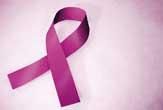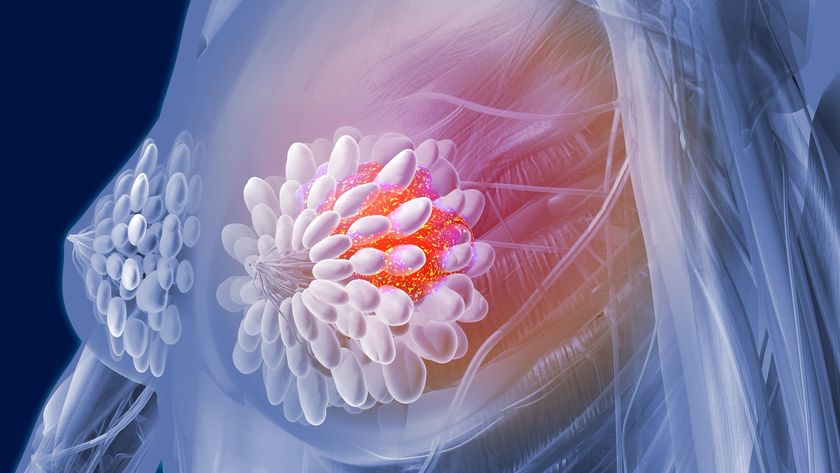Education Lacking During Breast Cancer Awareness Month

Has the pink ribbon devolved into a cheap amulet to ward off breast cancer?
Clearly most of us understand that the pink ribbon, out in full force during October, National Breast Cancer Awareness Month, is symbolic of a commitment to fight the second-most common and second-most deadly cancer for U.S. women.
Yet sometimes you have to wonder whether the public is aware of the nature of breast cancer.
I saw one woman sporting a sassy "save the ta-tas" bumper stickers. She was smoking. She was overweight. And she was in the drive-through for McDonald's. I exaggerate not. She — and, by default, what might have been her two daughters in the car — were increasing their risk for breast cancer by consuming foods high in saturated fat, by not even doing their bodies the favor of walking into the restaurant, and by smoking (albeit a marginal breast cancer risk).
A sample size of one, true. But was this woman aware of the irony?
Cause and consequences
Likely not. Bafflingly so, National Breast Cancer Awareness Month isn't about awareness of the causes of cancer. Rather, the campaign, now in its 25th year, is about awareness and education once you have breast cancer.
Sign up for the Live Science daily newsletter now
Get the world’s most fascinating discoveries delivered straight to your inbox.
According to its website, the campaign's primary focus is to "provide greater access to screening services" while remaining "dedicated to educating and empowering women to take charge of their own breast health by practicing regular self-breast exams..., scheduling regular visits and annual mammograms with their healthcare provider, adhering to prescribed treatment, and knowing the facts about recurrence."
That's a positive message. But true awareness needs to start long before a lump is detected.
The top risk factors for non-hereditary breast cancer, aside from being female, are obesity, inactivity, excessive alcohol consumption and delayed childbearing. Less serious risks are smoking and oral contraception. [10 Tips for Avoiding Cancer]
There is no cause-and-effect here: Having your first child after age 35 isn't a sure ticket for a tumor; and most obese women will not die of breast cancer. Yet lifestyle choices are a major factor.
Consider how immigrant women and their daughters routinely adopt U.S. cancer rates. Korean women in California, for example, are over 1.5 times more likely to develop breast cancer compared to Korean women in Korea, according to a study in the Journal of Women's Health published in June 2010 — the latest of numerous studies showing the effects of adopting a U.S. diet and lifestyle.
The World Cancer Research Fund, in its 2008 review of 100 studies, estimates that approximately 40 percent of breast cancers in industrialized countries such as the United States and United Kingdom could be prevented by exercise, diet and reduced alcohol consumption.
Aware of limited success
As sincere as the National Breast Cancer Awareness Month movement has been, one must question its success. Breast cancer rates have dropped only marginally in the last 25 years, despite the "awareness," and rates in fact have increased for African American women, according to the National Center for Health Statistics.
The movement's central dogma of breast self-examinations has been on shaky ground for over a decade. Numerous studies have shown that self-examinations not only are ineffective at detecting cancer but detrimental because they lead to biopsies of benign lesions. The most recent large analysis was from the U.S. Preventive Services Task Force, published in the Annals of Internal Medicine in November 2009.
Self-examinations have their place, but without "awareness" of healthy lifestyle changes, something National Breast Cancer Awareness Month doesn't emphasize, these exams are futile.
The Susan G. Komen Race for the Cure is more on target, with awareness of disease coupled with awareness of prevention. Yet while finding a breast cancer cure is a noble goal, it isn't entirely realistic. Breast cancer actually is a collection of different kinds of cancers, each with their own pathology. The only similarity is that these cancers originate in the breast.
At least National Breast Cancer Awareness Month provides a forum to talk about breast cancer. Pity we can't do the same for prostate cancer, the most common cancer in men and the second most deadly, behind lung cancer. I shutter to think of the possible bumper stickers.
Christopher Wanjek is the author of the books "Bad Medicine" and "Food At Work." His column, Bad Medicine, appears each Tuesday on Live Science.

Christopher Wanjek is a Live Science contributor and a health and science writer. He is the author of three science books: Spacefarers (2020), Food at Work (2005) and Bad Medicine (2003). His "Food at Work" book and project, concerning workers' health, safety and productivity, was commissioned by the U.N.'s International Labor Organization. For Live Science, Christopher covers public health, nutrition and biology, and he has written extensively for The Washington Post and Sky & Telescope among others, as well as for the NASA Goddard Space Flight Center, where he was a senior writer. Christopher holds a Master of Health degree from Harvard School of Public Health and a degree in journalism from Temple University.


